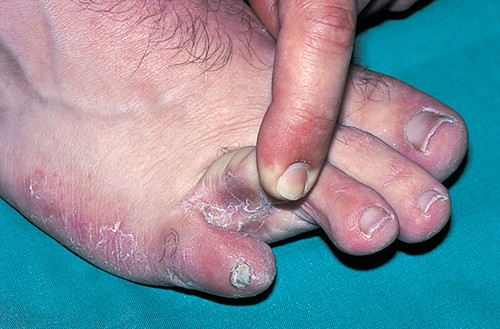Peer Reviewed
Feature Article Infectious diseases
Nail disease: Is it fungal? If so, what should I do?
Abstract
There are many causes of nail dystrophy, and a careful evaluation will assist in reaching the correct diagnosis and assessing the need to treat. Not all nail disease is caused by a fungal infection, but physicians need to know what to do when it is.
Key Points
- If a single nail plate is destroyed, consider Bowen’s disease and malignant melanoma.
- Nail dystrophy may be caused by psoriasis. Ask the patient about a family history and look for the presence of other signs.
- Oral therapy to clear the toenails of fungal infection is important in patients who have diabetes, are immunosuppressed or have a history of recurrent cellulitis.
- If there is recurrent tinea at other sites, check the toenails – these may be the source of the recurrences. If the fingernails on only one hand are involved, check the toenails (usually both feet are involved).
- The side effect profile of the medication must be weighed against the desire to treat a purely cosmetic problem.
Purchase the PDF version of this article
Already a subscriber? Login here.

